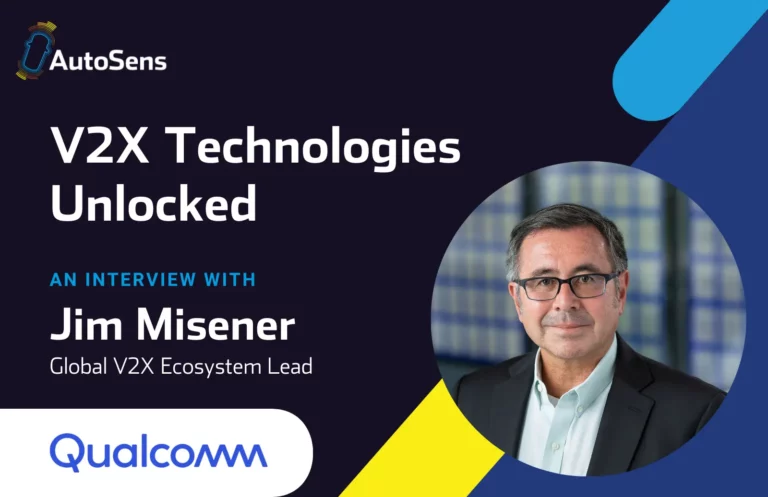Start-ups are highly sought after in the automotive technology sector, with new ideas, novel approaches and exciting new technology, and dozens of established companies in the supply chain always interested to see more.
The AutoSens vehicle perception conference and exhibition provides special support for start-ups, to nurture the next generation of technologists and ideas into industrial production and mass adoption.
A German company with specialist vehicle positioning technology, Naventik, exhibited at AutoSens 2016 as a start-up, and has just confirmed it will return as a full exhibitor at both of our upcoming events in 2018.

Alex Lawrence-Berkeley chatted to co-founder Peter Kalinowski, about the company, its innovations, recent activities, and plans for 2018.
“Thanks for taking the time to talk to us, and we should start with the most exciting news for us, which is that you’ve just confirmed Naventik will be exhibiting at both AutoSens US in Detroit (17-19 May) and AutoSens Europe in Belgium (19-21 September) …
We first saw you in Brussels in 2016, when you took part in our special starting grid feature – just for start-ups. What’s changed since then?
AutoSens Brussels was our first approach on the commercial market after a long history of research and development on our product, the PATHFINDER GNSS Software Receiver. We gained lots of interest from system integrators and technology providers for ADAS, and we started to collaborate with a couple of them in order to sharpen our product range and to further develop features.
We also gained interest from potential investors. The market feedback and the investor interest initiated our Seed financing and to issue the first version of PATHFINDER, a implementation on Nvidia Drive PX 2. We learned that our technology is able to fulfil the demands of developers with current GNSS receivers. That encouraged us to further focus on the automotive market.
And how much of that was due to your attendance at AutoSens?
We turned two leads we generated at AutoSens into direct orders. So, from a financial perspective, it definitely paid off.
You’re a small company, but you’ve developed a number of positioning tools which are ideal for cars – have your products been used anywhere else?
We are focussing on vehicle localization, so due to a collaboration with Deutsche Bahn we were able to learn that all localization issues of cars can be adapted to train localization. So, we are currently developing a train localization module which will be able to reach SIL4. And we are keeping in mind that our Software Receiver can also be used for the localization of drones. But that’s a strategic perspective.
We’ve heard lots of talk about the complexity of vehicle positioning slowing down the journey to autonomous vehicles, apart from your own work – what are the challenges and solutions?
HD Maps, Slam based localization approaches and vision perception had been the megatrends in autonomous systems for the last couple of years. Just now, many developers are recognizing the potential of GNSS sensors, even when it comes to initialization of systems. The efficient mix of sensors like LIDAR, RADAR together with HD Maps and GNSS will be the key to realize systems SAE Level 3 and up for the mass market.
How do you work with your partners and customers?
Before we enter into platform licences for PATHFINDER, we perform an integration project together with our partners. Within these PoC projects, we show how to level up the localization performance of ADAS systems. We also do workshops to improve GNSS sensor use in customers systems and to implement functional safety concepts.
Is Naventik planning any new products and if so, when can we expect to hear more about them?
Just now we offer our Software for integration on Nvidia Drive PX 2. We are planning to also issue PATHFINDER for NXP Blue Box. In Q2 2018 we will come up with a software based differential GPS solution, ready for the demands of ITS like autonomous buses.
What advantages do you have being a company based in Chemnitz, Germany?
Chemnitz was the former heart of Automotive industry. Manufacturers like Audi were founded here, so we have a long tradition of car manufacturing in our region. Now we have an automotive software cluster with major players like IAV and Volkswagen in Chemnitz. We perfectly fit in here. And due to the local University we have a good basis of skilled developers, willing to work on the next revolution of automotive industry.
Are you recruiting? What are you looking for in potential new employees? What sort of education, skills and experience?
We are on a growth path up to 30 developers in Chemnitz in the next 2 years. We are seeking senior level developers with experience in automotive projects. But mainly we are looking for the typical coding expert, who is able to do magic in C++.
Lastly, we’ve included an interview and your pitch presentation from AutoSens 2016 below – any updates to make on those?
We learned lots of things from our customers and partners since 2016. The main step was to increase our project speed- we can integrate pour technology very quickly and level up the results for our customer. We turned from a research project into an service oriented company.
Pitch video:
[embedyt]https://www.youtube.com/watch?v=UmdhY0HytxI[/embedyt]
Interview:
[embedyt]https://youtu.be/9ZS4zbp4Vuk?t=2m5s[/embedyt]
Every year we follow the story of one of our previous startups, their journey into the automotive supply chain and what impact being part of the AutoSens community has had on their business. Another startup at AutoSens Brussels 2016, Xenomatix, exhibited at both of our 2017 events. Read their story.







